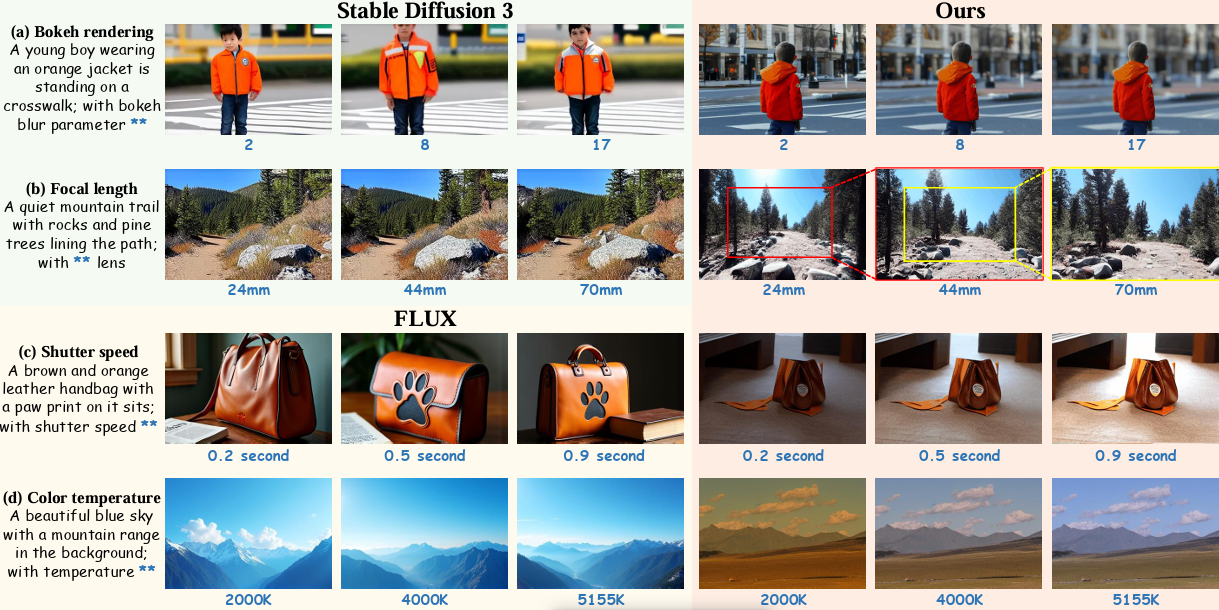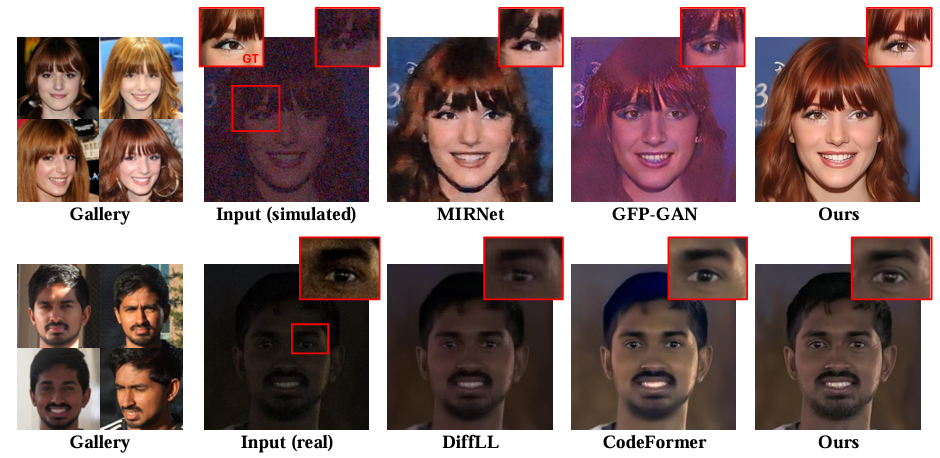Generative Photography
Generative Photography: Scene-Consistent Camera Control for Realistic Text-to-Image Synthesis
IEEE/CVF Conference on Computer Vision and Pattern Recognition 2025
Yu Yuan, Xijun Wang, Yichen Sheng, Prateek Chennuri, Xingguang Zhang, Stanley Chan
Manuscript: https://arxiv.org/pdf/2412.02168
Projet Page: https://generative-photography.github.io/project/
Image generation today can produce somewhat realistic images from text prompts. However, if one asks the generator to synthesize a particular camera setting such as creating different fields of view using a 24mm lens versus a 70mm lens, the generator will not be able to interpret and generate scene-consistent images. This limitation not only hinders the adoption of generative tools in photography applications but also exemplifies a broader issue of bridging the gap between the data-driven models and the physical world. In this paper, we introduce the concept of Generative Photography, a framework designed to control camera intrinsic settings during content generation. The core innovation of this work are the concepts of Dimensionality Lifting and Contrastive Camera Learning, which achieve continuous and consistent transitions for different camera settings. Experimental results show that our method produces significantly more scene-consistent photorealistic images than state-of-the-art models such as Stable Diffusion 3 and FLUX.
Personalized Generative Low-light Image Denoising and Enhancement
Xijun Wang, Prateek Chennuri, Yu Yuan, Bole Ma, Xingguang Zhang, Stanley Chan
Manuscript: https://arxiv.org/pdf/2412.14327
Project Page: https://genai-restore.github.io/DiffPGD/
While smartphone cameras today can produce astonishingly good photos, their performance in low light is still not completely satisfactory because of the fundamental limits in photon shot noise and sensor read noise. Generative image restoration methods have demonstrated promising results compared to traditional methods, but they suffer from hallucinatory content generation when the signal-to-noise ratio (SNR) is low. Recognizing the availability of personalized photo galleries on users’ smartphones, we propose Personalized Generative Denoising (PGD) by building a diffusion model customized for different users. Our core innovation is an identity-consistent physical buffer that extracts the physical attributes of the person from the gallery. This ID-consistent physical buffer provides a strong prior that can be integrated with the diffusion model to restore the degraded images, without the need of fine-tuning. Over a wide range of low-light testing scenarios, we show that PGD achieves superior image denoising and enhancement performance compared to existing diffusion-based denoising approaches.
Generative Quanta Color Imaging
IEEE/CVF Conference on Computer Vision and Pattern Recognition 2024
Vishal Purohit, Junjie Luo, Yiheng Chi, Qi Guo, Stanley H Chan, Qiang Qiu
Manuscript: https://arxiv.org/abs/2403.19066
Project Page: https://vishal-s-p.github.io/projects/2023/generative_quanta_color.html
The astonishing development of single-photon cameras has created an unprecedented opportunity for scientific and industrial imaging. However the high data throughput generated by these 1-bit sensors creates a significant bottleneck for low-power applications. In this paper we explore the possibility of generating a color image from a single binary frame of a single-photon camera. We evidently find this problem being particularly difficult to standard colorization approaches due to the substantial degree of exposure variation. The core innovation of our paper is an exposure synthesis model framed under a neural ordinary differential equation (Neural ODE) that allows us to generate a continuum of exposures from a single observation. This innovation ensures consistent exposure in binary images that colorizers take on resulting in notably enhanced colorization. We demonstrate applications of the method in single-image and burst colorization and show superior generative performance over baselines.


